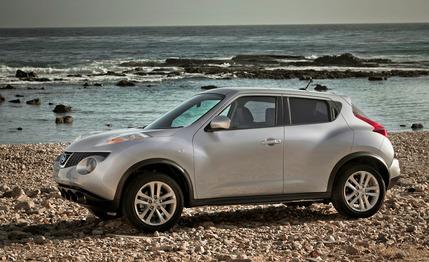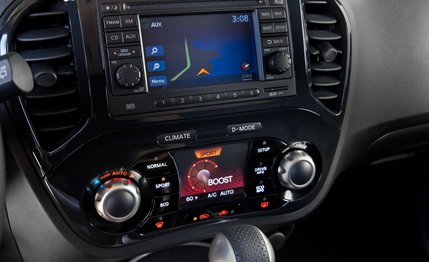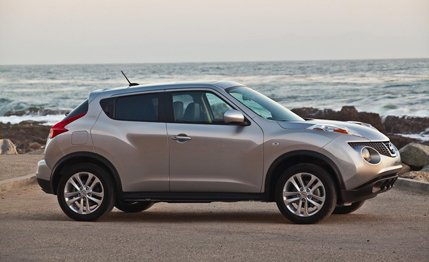 Short Take Road Test
Short Take Road Test

Fearless prediction: Nissan has a hit in the new Juke. We’ve rung that alarm bell before, but here’s what we learned while putting the test equipment on a six-speed manual version of Nissan’s new five-door compact crossover: The Juke is fun, it’s clever, it’s roomy for a small car, it’s not nearly as slow as we expected, and it feels more expensive than it is. If good product produces high sales (and it does, in a perfect world), then the Juke should make Nissan a mint.
Hitting 60 mph in 7.5 seconds—over a second quicker than the Honda CR-V—and the quarter-mile in 15.7 seconds at 91 mph wouldn’t be nearly as newsworthy if the Juke had a larger thruster. But behind that round face is a turbocharged direct-injection four displacing 1.6 liters. Some motorcycles have more bore. The 188-hp 1.6 in the Juke is in the advance guard of a wave of new, shrunken-down high-tech and higher-output engines coming as the industry moves to smaller mills in the interest of fuel economy. If the Juke is a preview of the future, we’re okay with it.
Lots of Content, a Little Bit of Money

Even with a sunroof and leather seats, our loaded-up $23,300 Juke SL weighed only 2909 pounds, about the same as a Honda S2000. (Base prices range from $19,710 for the CVT-only S with front-wheel drive to $25,300 for the full-monty SL with AWD and a CVT.) Granted, the six-speed manual only comes with front drive, not the optional torque-vectoring all-wheel drive that is available with the CVT. And with front drive, you get the simpler twist-beam rear axle, not the multilink rear end that comes on AWD models.
The performance of 0.78 g on our 200-foot skidpad was held back because the Juke lost traction from its inside wheel spinning. The Nissan might do better on a 300-footer—like the one at our Michigan testing location—as it wouldn’t be leaned over as far.
Even so, the Juke exhibits some of the Mini Cooper’s juju as it runs around town, dashing about freeway on-ramps and zipping in and out of holes in traffic. The steering is quick and lively, and the Juke feels small and agile, although it has ample room for adults in both the front and rear seats. There’s a decent cargo area, but you must fold the rear seats to get real carrying capacity. Families with strollers and such might find themselves cramped out of the Juke.

Mr. Personality
The cabin theme is sporty, with large, close-coupled gauges and, in the SL, a center-console climate and drive-mode information center with a high-resolution color screen. In climate mode, the six buttons around the screen govern the cabin’s heating and cooling functions. Push the “d-mode” button and the labels on the six buttons magically switch to vehicle-dynamic controls. You have a choice of Normal, Sport, and Eco drive modes, which vary throttle response, and you can page the screen through various data readouts showing your fuel-economy record or lateral g.
We spent most of our time driving around in Sport mode, as the spirited throttle response it provides was just too addictive. No surprise, then, that fuel economy suffered: Our 21-mpg average is almost certainly lower than what non-car-magazine types will see. The EPA figures for the manual are 24 city/31 highway.
Sure, the Juke’s puffy face has drawn its share of ridicule from internet wits (and half-wits), but the real, live people we encountered during our drive thought the Juke was interesting, amusing, and frog-like—nobody said it was ugly. One of the reasons the car feels small is that from the driver’s chair you can see both headlight blisters, which glow a fascinating amber at night.
That’s just one of many little touches that make the Juke about ten times more fascinating than, oh, say, any Toyota product we can think of. And look how many cars they sell.
